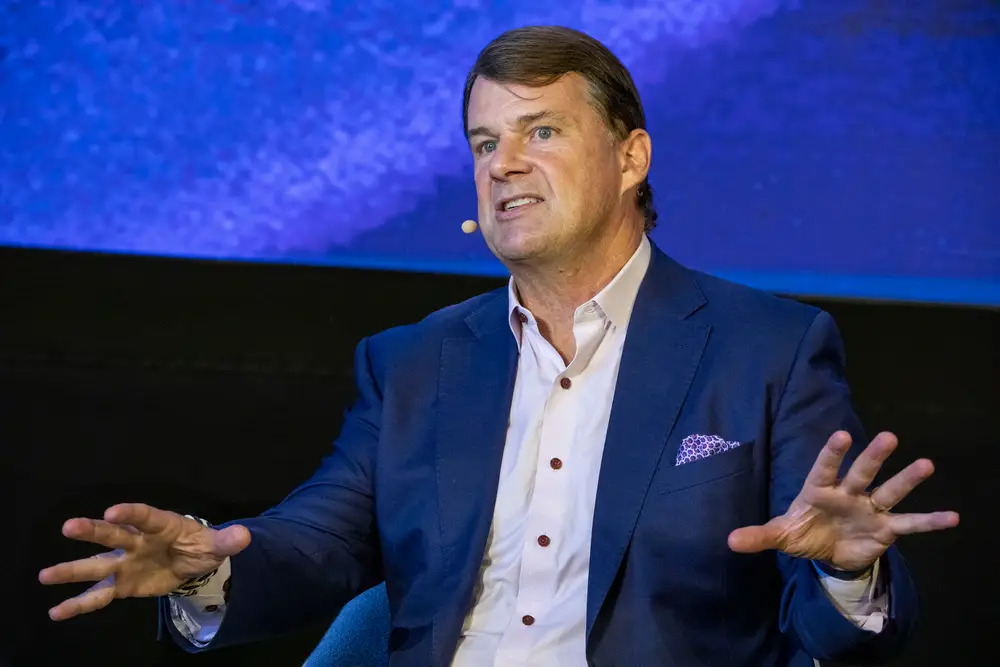In a revelation that’s shaking up the auto industry, Ford CEO Jim Farley disclosed that tearing apart Tesla and Chinese electric vehicles led to a “shocking” discovery — one that forced him to make a brutal business decision for Ford’s future. His deep dive into EV engineering revealed how far ahead global rivals are, and why Ford must radically rethink its electric vehicle game plan.
- Ford CEO The Shocking Find That Changed Ford’s Course
- The Birth of “Model E” — Ford’s Bold Experiment
- The Existential Threat from China
- Lessons from Tesla’s Efficiency
- Ford’s New EV Strategy: Leaner, Smarter, and Cheaper
- EV Market Reality Check
- Insights: What Ford Learned from the “EV Shock”
- Looking Ahead — The Future of Ford’s EV Mission
Ford CEO The Shocking Find That Changed Ford’s Course
During an upcoming episode of the Office Hours: Business Edition podcast, Jim Farley opened up about a humbling experience that started with something routine — dismantling competitors’ vehicles, a common industry practice.
When his engineers stripped down a Tesla Model 3, they found something surprising: Ford’s Mustang Mach-E carried almost one mile (1.6 km) more electrical wiring than Tesla’s sedan. That excess wiring added weight, required a bigger and costlier battery, and revealed deep inefficiencies in Ford’s EV design.
“I was very humbled when we took apart the first Model 3 Tesla and started to take apart the Chinese vehicles. When we took them apart, it was shocking what we found,” Farley admitted in the podcast.
He didn’t stop there. Similar teardowns of Chinese electric cars — especially from emerging giants like BYD and Xiaomi — unveiled a new level of innovation, compact wiring, and smarter architecture. The message was clear: Ford’s legacy design approach couldn’t compete in the EV revolution.
The Birth of “Model E” — Ford’s Bold Experiment
That shocking realization led Farley to create Ford’s Model E division in 2022, a dedicated EV innovation hub. This was a risky and expensive gamble. The division reported losses exceeding $5 billion in 2024, but Farley insists it was a necessary pain point.
“My ethos is, take on the hardest problems as fast as you can — sometimes in public — because you’ll solve them quicker that way,” he said, stressing the importance of transparency with investors.
The CEO believes being honest about setbacks helps Ford evolve faster. Despite the brutal financial hit, he sees the EV transition as vital for survival in the fast-changing auto industry.
The Existential Threat from China
Farley has been increasingly vocal about Chinese automakers posing an existential threat to traditional U.S. and European brands.
During a CBS Sunday Morning interview, he warned that Chinese EV companies could dominate global markets — not just through affordability, but also through technological superiority.
In China, 50 % of all new cars sold are electric, compared to just 10 % in the U.S.. Chinese brands such as BYD, Xpeng, and NIO offer smart, connected vehicles at prices Western automakers struggle to match.
“We can’t walk away from EVs, not just for the U.S., but if we want to be a global company,” Farley said. “I’m not going to just cede that to the Chinese.”
His words underline a broader industry fear: that the West is lagging behind in the electric revolution.
Lessons from Tesla’s Efficiency
Farley’s teardown insights reveal that Tesla’s design philosophy emphasizes simplicity, efficiency, and software-first engineering — an approach Ford aims to emulate.
While Ford’s Mach-E has more wires and complex components, Tesla relies on software-defined systems that reduce physical parts, improve performance, and lower costs. Chinese EVs have gone even further, integrating AI, lightweight architecture, and smaller battery packs with faster charging technology.
To catch up, Ford plans to cut manufacturing complexity by 25% and redesign its production lines to be more modular — mirroring Tesla’s and China’s agile approach.
Ford’s New EV Strategy: Leaner, Smarter, and Cheaper
In August 2025, Ford announced a $5 billion reinvestment into EV manufacturing, revamping its Kentucky plant that produces F-Series Super Duty trucks. The goal: build a $30,000 electric pickup truck — affordable, efficient, and ready to rival Tesla’s Cybertruck and BYD’s Seal U.
The new truck is expected by 2027, marking a shift toward everyday EV affordability rather than luxury electric cars priced at $70,000+.
“U.S. customers want affordability. That’s where the future of EVs lies,” Farley told investors.
This affordable EV focus mirrors trends in China, where cost-effective models dominate sales. Ford’s next generation of EVs will feature simpler wiring, lighter frames, and software-driven architecture, all inspired by what Farley’s team discovered inside Tesla and Chinese EVs.
EV Market Reality Check
Despite record EV sales in 2025, Farley remains realistic. On Ford’s Q3 earnings call, he stated that EVs will likely make up just 5 % of the U.S. car market in the near term, as high prices and charging concerns limit adoption.
Still, the company saw its best-ever EV sales quarter, with consumers rushing to purchase before federal EV tax credits expired in September. The surge gave Ford confidence to double down, even amid short-term losses.
Insights: What Ford Learned from the “EV Shock”
- Efficiency beats tradition. Tesla and Chinese automakers design EVs from scratch, not as conversions of gas models.
- Software matters. Smart connectivity, OTA updates, and predictive maintenance are non-negotiable in the EV future.
- Affordability drives adoption. The $30K EV plan could be Ford’s gateway into mass-market success.
- Transparency wins trust. Farley’s public acknowledgment of Ford’s EV struggles builds credibility with investors and consumers alike.
These lessons now form the backbone of Ford’s Model E division roadmap.
Looking Ahead — The Future of Ford’s EV Mission
Ford is re-engineering its DNA to survive in the EV era. The upcoming affordable midsize electric truck (2027) will be the first real test of Farley’s vision.
If successful, it could help Ford reclaim leadership in the global electric market and prove that legacy automakers can still evolve with agility.
But the CEO knows the road ahead is far from easy.
“It’s brutal business-wise,” Farley said, “but it’s the only way forward.”
- Official Ford Press Release — https://media.ford.com/
- Business Insider Report — https://www.businessinsider.com/
Get the latest updates on Global India Broadcast News your trusted digital destination for breaking headlines, entertainment buzz, lifestyle trends, health and fitness tips, technology insights, business developments, political updates, world news, and exclusive interviews from India and around the globe.








